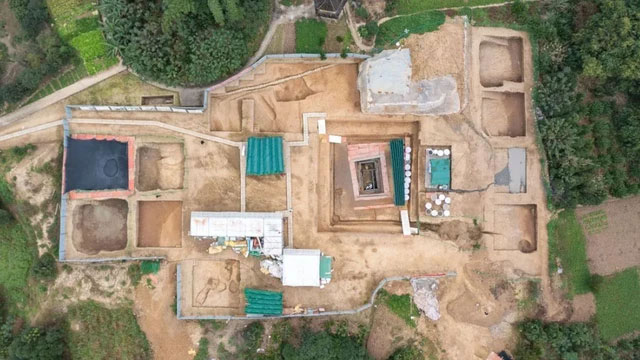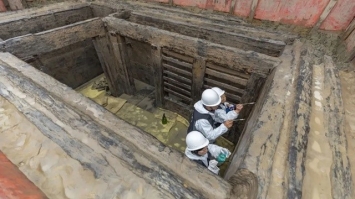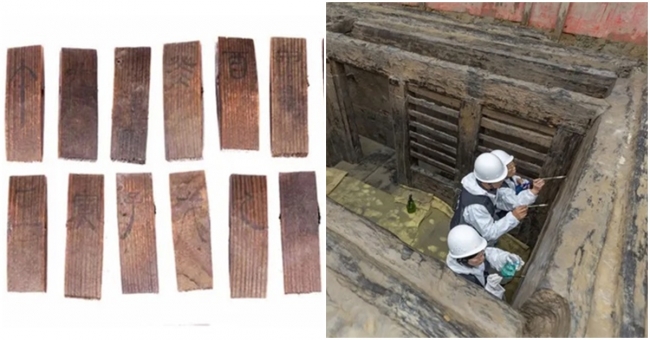An ancient noble tomb with 600 precious burial items has just been unearthed in Chongqing City – China, containing something surprising.
Live Science quoted a Chinese archaeological team as saying that among hundreds of treasures filled in the tomb, they found something that has never appeared in ancient tombs, which is a type of ancient astronomical calendar .
 Excavation scene of a lavish ancient tomb in Chongqing City – China – (Photo: CHONGQING ARCHAEOLOGICAL AND CULTURAL RELICS RESEARCH INSTITUTE)
Excavation scene of a lavish ancient tomb in Chongqing City – China – (Photo: CHONGQING ARCHAEOLOGICAL AND CULTURAL RELICS RESEARCH INSTITUTE)
Specifically, the strange calendar consists of 23 wooden panels measuring 2.5×10 cm, with Chinese characters engraved on top showing that it is a Thien Can Dia Chi calendar , originating from the Shang Dynasty (1600- 1045 BC).
Round holes in the edge of each slide show that they were once tied together.
 The ancient calendar was found among more than 600 artifacts in the ancient tomb – (Photo: CHONG KHANH ARCHAEOLOGICAL AND CULTURAL RESEARCH INSTITUTE).
The ancient calendar was found among more than 600 artifacts in the ancient tomb – (Photo: CHONG KHANH ARCHAEOLOGICAL AND CULTURAL RESEARCH INSTITUTE).
Although the Thien Can Dia Chi calendar system is not strange, because this type of ancient calendar has never been seen before, archaeologists still cannot confirm how the ancients used this wooden calendar.
They only guessed that one piece of the calendar would represent the current year when used, the remaining 22 pieces could be used to determine any year, according to China News.

In addition to the precious ancient calendar, the tomb located in Vu Long district of Chongqing City also contains a series of other valuable artifacts, confirming the aristocratic status of the person in the tomb.
The ancient tomb has a written list clearly listing burial items as well as a note stating that the tomb was established in 193 BC, during the Western Han Dynasty (206 BC to 9 AD ).
The Western Han Dynasty was followed by the Eastern Han Dynasty, which lasted until 220 AD. The two dynasties together created a golden age of ancient China in which many traditions were formed.
According to archaeologist Wang Meng, a member of the Chongqing City research team, this ancient tomb is the best preserved wooden chamber tomb ever excavated in southwest China.

Speaking to the Global Times , project leader Huang Wei said that in addition to the calendar, the tomb also contained 600 other artifacts ranging from thousands of dining utensils, vases, lacquer plates, musical instruments, figurines, ceramics, and utensils. copper… After 2,200 years, these artifacts have become treasures.






